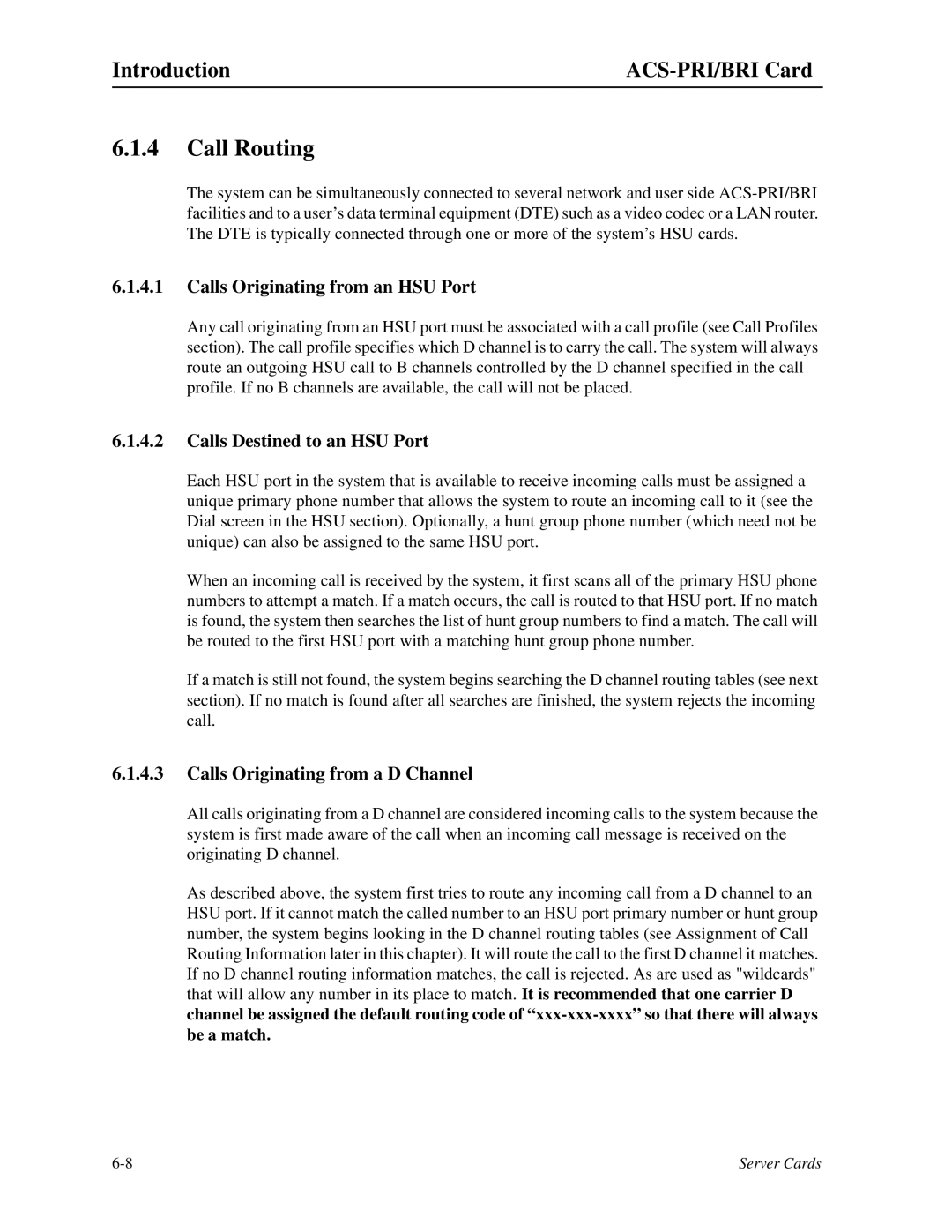Introduction |
6.1.4Call Routing
The system can be simultaneously connected to several network and user side
6.1.4.1Calls Originating from an HSU Port
Any call originating from an HSU port must be associated with a call profile (see Call Profiles section). The call profile specifies which D channel is to carry the call. The system will always route an outgoing HSU call to B channels controlled by the D channel specified in the call profile. If no B channels are available, the call will not be placed.
6.1.4.2Calls Destined to an HSU Port
Each HSU port in the system that is available to receive incoming calls must be assigned a unique primary phone number that allows the system to route an incoming call to it (see the Dial screen in the HSU section). Optionally, a hunt group phone number (which need not be unique) can also be assigned to the same HSU port.
When an incoming call is received by the system, it first scans all of the primary HSU phone numbers to attempt a match. If a match occurs, the call is routed to that HSU port. If no match is found, the system then searches the list of hunt group numbers to find a match. The call will be routed to the first HSU port with a matching hunt group phone number.
If a match is still not found, the system begins searching the D channel routing tables (see next section). If no match is found after all searches are finished, the system rejects the incoming call.
6.1.4.3Calls Originating from a D Channel
All calls originating from a D channel are considered incoming calls to the system because the system is first made aware of the call when an incoming call message is received on the originating D channel.
As described above, the system first tries to route any incoming call from a D channel to an HSU port. If it cannot match the called number to an HSU port primary number or hunt group number, the system begins looking in the D channel routing tables (see Assignment of Call Routing Information later in this chapter). It will route the call to the first D channel it matches. If no D channel routing information matches, the call is rejected. As are used as "wildcards" that will allow any number in its place to match. It is recommended that one carrier D channel be assigned the default routing code of
Server Cards |
